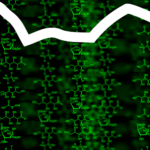Link to Pubmed [PMID] – 32778056
Link to DOI – 10.1186/s12859-020-03666-4
BMC Bioinformatics 2020 Aug; 21(1): 345
Comparing the composition of microbial communities among groups of interest (e.g., patients vs healthy individuals) is a central aspect in microbiome research. It typically involves sequencing, data processing, statistical analysis and graphical display. Such an analysis is normally obtained by using a set of different applications that require specific expertise for installation, data processing and in some cases, programming skills.Here, we present SHAMAN, an interactive web application we developed in order to facilitate the use of (i) a bioinformatic workflow for metataxonomic analysis, (ii) a reliable statistical modelling and (iii) to provide the largest panel of interactive visualizations among the applications that are currently available. SHAMAN is specifically designed for non-expert users. A strong benefit is to use an integrated version of the different analytic steps underlying a proper metagenomic analysis. The application is freely accessible at http://shaman.pasteur.fr/ , and may also work as a standalone application with a Docker container (aghozlane/shaman), conda and R. The source code is written in R and is available at https://github.com/aghozlane/shaman . Using two different datasets (a mock community sequencing and a published 16S rRNA metagenomic data), we illustrate the strengths of SHAMAN in quickly performing a complete metataxonomic analysis.With SHAMAN, we aim at providing the scientific community with a platform that simplifies reproducible quantitative analysis of metagenomic data.








